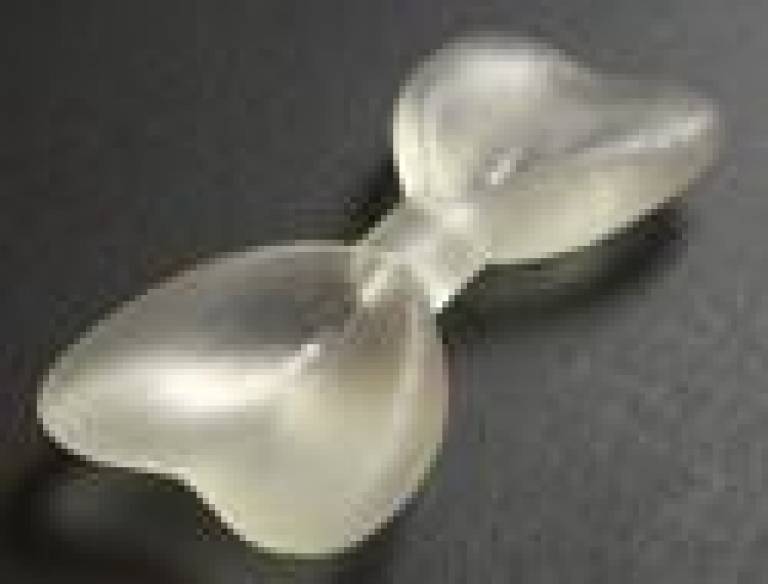Computer-generated fashion
16 February 2006
UCL researcher Mr Siavash Mahdavi (UCL Computer Science) has designed a new technology which can 'print out' objects directly from intricate design plans into finished, three-dimensional objects.
 His technology promises to revolutionise the production of many devices, including clothes, shoes, safety headgear and vehicle parts - and his printed-out products will be showcased at this year's London Fashion Week.
His technology promises to revolutionise the production of many devices, including clothes, shoes, safety headgear and vehicle parts - and his printed-out products will be showcased at this year's London Fashion Week.
Mr Mahdavi's invention works by sending intricate, computer-generated 3D designs through to a machine that beams each detail of the pattern into liquid resin using ultraviolet light. As each pinpoint of light hits the resin, the resin solidifies, gradually piecing together the object depicted in the design. A solution of plastic, or metal dust can be used in place of the resin to create objects in these materials, too.
Because it cuts out the need for a costly mass production process, Mr Mahdavi's idea has generated great interest amongst companies who need to manufacture just a small quantity of items made to customised requirements. He has worked with UCL Ventures to form a company, 'Complex Matters', so that he can work towards tailoring his invention for industry.
Fashion designer Manish Arora will be the first to draw on Mr Mahdavi's technology when his models step out onto the London catwalks in February in ready-printed buttons, brooches and handbag clutches. Sports-shoe designers are also keen to use the technology to produce tailor-made shoes that are customised to an individual's foot shape, weight, and gait. The first examples of 'printed' football shoes are due to appear in April to mark the kick-off of the 2006 World Cup.
Mr Mahdavi explained: "A particular strength of this system is that it can print out designs in very high resolution. This means that when we print a product, we can vary the density in different parts of it, creating an object that is seamless, but with different density in different parts - very difficult to achieve with existing production methods. An aeroplane wing, for example, needs to be very stiff near the fuselage and very flexible and bendy at the tail edge. We could specify this during the design process and then print out a wing with these qualities."
To generate the 3D designs, Mr Mahdavi has created an artificially intelligent computer programme, which works out the best design using a genetic algorithm. The algorithm works by creating thousands of possible designs, fighting them off against each other so that the most efficient designs survive, then 'mating' these top designs to create yet more efficient hybrids, and then repeating the process. Mr Mahdavi's programme can swiftly run through 1000 generations of design to arrive at a super-efficient solution.
Where aesthetics are a consideration - as in the case of fashion design - a graphic designer can interact with the programme, so that human and machine arrive together at a product that combines beauty with efficiency.
Mr Mahdavi predicts that in years to come, his computer programme and the product-printing equipment could become widespread, allowing us all to realise our design doodles. He joked: "You might even be able to print out a pair of shoes in the privacy of your own room!"
 Close
Close

